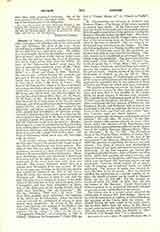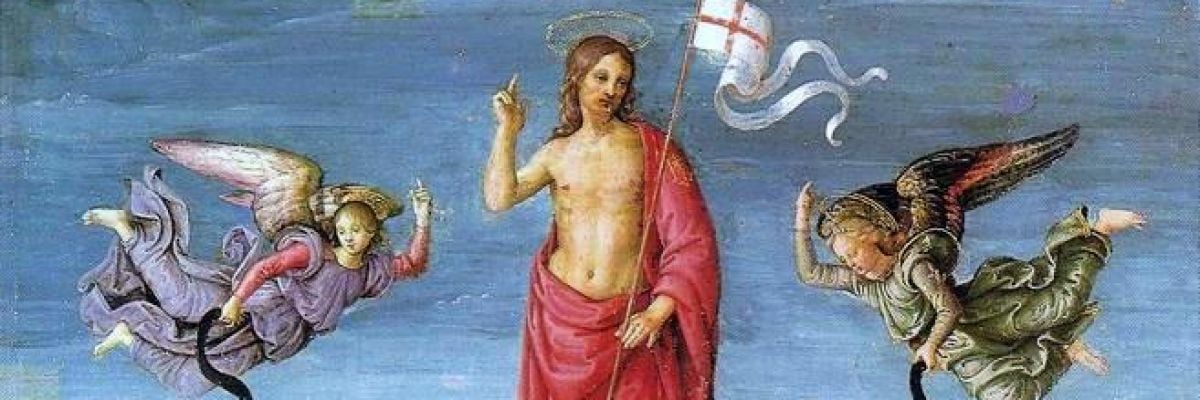

Octave.—I. ORIGIN.—It is the number seven, not eight, that plays the principal role in Jewish heortology, and dominates the cycle of the year. Every seventh day is a sabbath; the seventh month is sacred; the seventh year is a sabbatical year. The jubilee year was brought about by the number seven multiplied by seven; the feast of the Azymes lasted seven days, like the paschal feast; the feast of Pentecost was seven times seven days after the Pasch; the feast of the Tabernacles lasted seven days, the days of convocation numbered seven (Willis, “Worship of the Old Covenant”, 190-1; “Dict. of the Bible“, s.v. Feast and Fasts, I, 859). However, the octave day, without having the symbolic importance of the seventh day, had also its role. The eighth day was the day of circumcision (Gen., xxi, 4; Lev., xii, 3; Luke, i, 59; Acts, vii, 8 etc.). The feast of the Tabernacles, which as we have said lasted seven days, was followed on the eighth by a solemnity which may be considered as an octave (Lev., xxiii, 36, 39; Num., xxix, 35; II Esd. viii, 18); the eighth day was the day of certain sacrifices (Lev., xiv, 10, 23; xv, 14, 29; Num., vi, 10). It was on the eighth day, too, that the feast of the dedication of the Temple under Solomon, and of its purifications under Ezechias concluded (II Par., vii, 9; xxix, 17). The ogdoad of the Egyptians and similar’, numerical phantasies among other peoples had no influence on Christian liturgy. Gavanti’s opinion that the custom of celebrating the octave of feasts dates back to the days of the Apostles is devoid of proof (Thesaurus sacr. rit., 31 sq.). At first the Christian feasts have no octaves. Sunday, which may in a sense be considered the first Christian feast, falls on the seventh day; the feasts of Easter and Pentecost, which are, with Sunday, the most ancient, form as it were only a single feast of fifty days. The feast of Christmas, which too is very old, had originally no octave.
In the fourth century, when the primitive idea of the fifty days’ feast of the paschal time began to grow dim, Easter and Pentecost were given octaves. Possibly at first this was only a baptismal custom, the neophytes remaining in a kind of joyful retreat from Easter or Pentecost till the following Sunday. Moreover, the Sunday which, after the feasts of Easter and Pentecost, fell on the eighth day, came as a natural conclusion of the seven feast days after these two festivals. The octave, therefore, would have in a certain sense developed of its own accord. If this be so, we may say, contrary to the common opinion that Christians borrowed the idea of the octave from the Jews, this custom grew spontaneously on Christian soil. However, it must be said that the first Christian octave known to history is the dedication of the Churches of Tyre and Jerusalem, under Constantine, and that these solemnities, in imitation of the dedication of the Jewish Temple, lasted eight days (Eusebius, “De vita Constant”., III, xxx sq.; Sozomen, “Hist. eccl.”, II, xxvi). This feast may possibly have influenced the adoption of the octave by the Christians. From the fourth century onwards the celebration of octaves is mentioned more frequently. It occurs in the Apostolic Constitutions, the sermons of the Fathers, the Councils (“Const. Apost.”, VIII, xx) iii; V, xx; Augustine, “De div. temp.”, i; “Ep.”, lv, 32, 33 etc.; “Peregrinatio Etheri”, ed. Gamurrini, p. 100; cf. Cabrol, “Etude sur La Peregrinatio”, Paris, 1895, pp.116-7; “Concil. Matisc. II”, ii; “Concil. in Trullo”, lvi).
II. CELEBRATION OF OCTAVES IN Ancient AND MODERN TIMES.—The liturgy of the octave assumed its present form slowly. In the first period, that is from the fourth to the sixth and even seventh century, little thought seems to have been given to varying the liturgical formulae during the eight days. The sacramentaries of Gelasius and St. Gregory make no mention of the intervening days; on the octave day the office of the feast is repeated. The dies octava is indeed made more prominent by the liturgy. The Sunday following Easter (i.e. Sunday in albis) and the octave day of Christmas (now the Circumcision) are treated very early as feast days by the liturgy. Certain octaves were considered as privileged days, on which work was forbidden. The courts and theatres were closed (“Cod. Theod.”, XV, tit. v de spect. leg. 5; IX, de quaest. leg. 7; “Conc. Mog.”, 813, c. xxxvi). After Easter, Pentecost, and Christmas had received octaves, the tendency was to have an octave for all the solemn feasts. Etheria speaks of the feast of the Dedication (cf. Cabrol, op. cit., pp. 128-9). Theodemar, a contemporary of Charlemagne, speaks only of the octaves of Christmas and the Epiphany, but it must not be concluded that he was ignorant of those of Easter and Pentecost, which were more celebrated.
The practice of having octaves for the feasts of the saints does not seem to be older than the eighth century, and even then it was peculiar to the Latins. From the ninth century it becomes more frequent, The capitularies of Charlemagne speak of the octaves of Christmas, the Epiphany, and Easter. Amalarius, after mentioning the four octaves of Christmas, the Epiphany, Easter, and Pentecost, tells us that it was customary in his time to celebrate the octaves of the feasts of Sts. Peter and Paul and other saints, “quo-rum festivitas apud nos clarior habetur, . et quorum consuetudo diversarum ecclesiarum octavas celebrat” (De eccl. offic.. IV, xxxvi). In the thirteenth century this custom extends to many other feasts, under the influence of the Franciscans, who then exerted a preponderating influence on the formation of the modern Breviary (Baumer-Biron, “Hist. du Breviaire”, II, 31, 71, 199). The Franciscan feasts of Sts. Francis, Clare, Anthony of Padua, Bernadine etc., had their octaves. At the time of the reformation of the Breviary (Breviary of St. Pius V, 1568) the question of regulating the octaves was considered. Two kinds of octaves were distinguished, those of feasts of our Lord, and those of saints and the dedication. In the first category are further distinguished principal feasts—those of Easter and Pentecost, which had specially privileged octaves, and those of Christmas, the Epiphany, and Corpus Christi, which were privileged (the Ascension octave was not privileged). Octaves, which exclude all or practically all occuring and transferred feasts, are called privileged. The octaves of saints were treated almost like that of the Ascension. This classification entailed the application of a certain number of rubrics, the details of which can be found in Baumer-Biron, op. cit., II, 199-200. For the changes introduced under Leo XIII, cf. ibid., 462, and also the rubrics of the Breviary. Under Octavarium Romanum there is an account of Gavanti’s attempt to provide a more varied office for the octaves.
The Greeks also to a certain extent admitted the celebration of octaves into their liturgy. However, we must be careful not to confuse, as is too often done, the apodosis of the Greeks with the octave. Although having the same origin as the Latin octave, the apodosis differs from the octave in this, that it occurs sometimes on the eighth, and sometimes on the fifth, the fourth, or the ninth (see Petrides in “Dict. d’archeol. et de liturgie chret.”, s.v. Apodosis).
FERNAND CABROL


